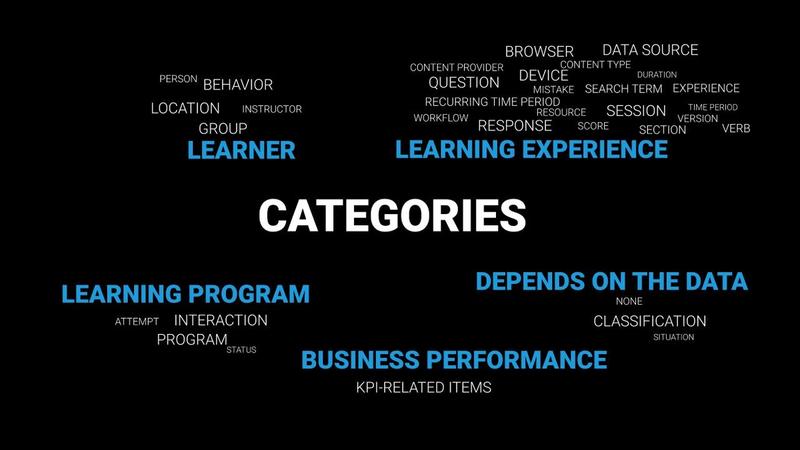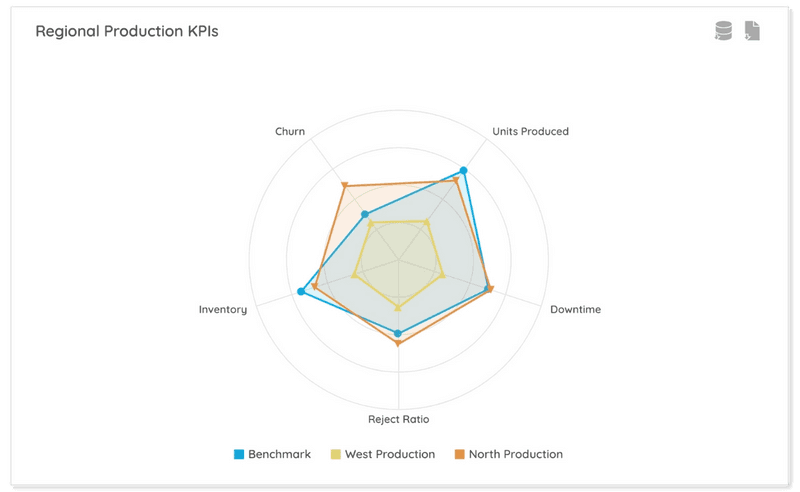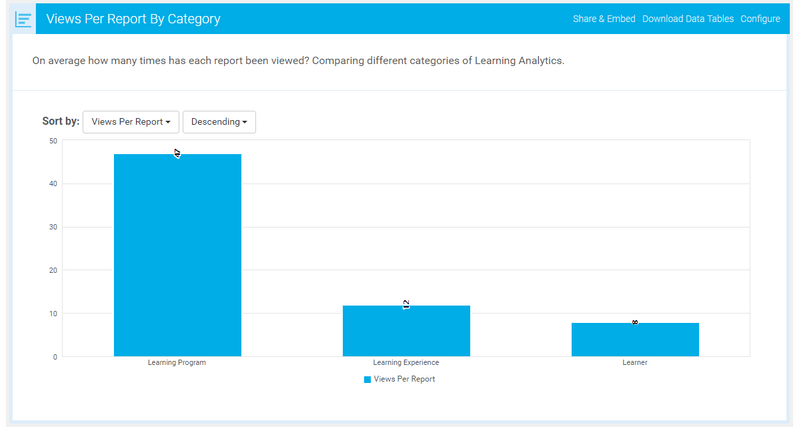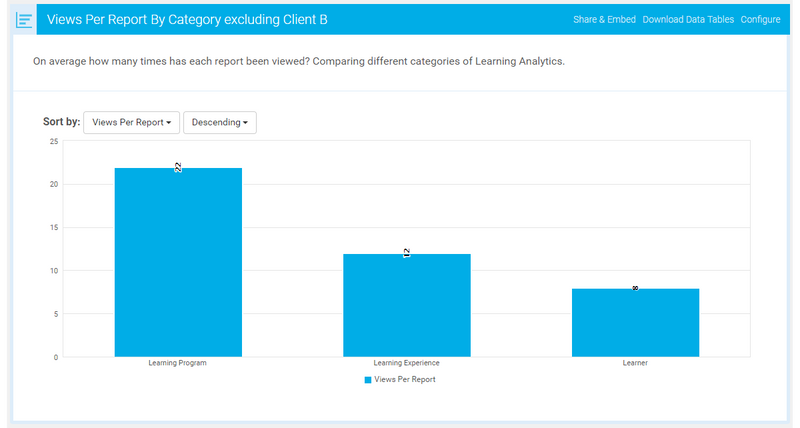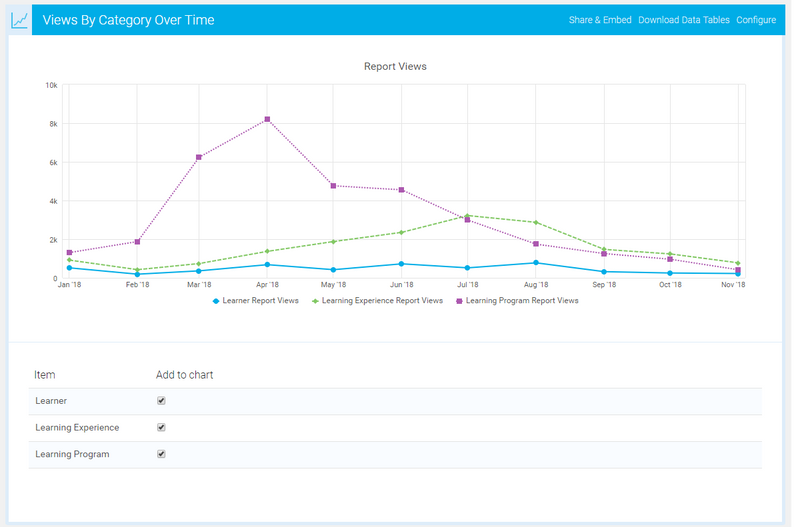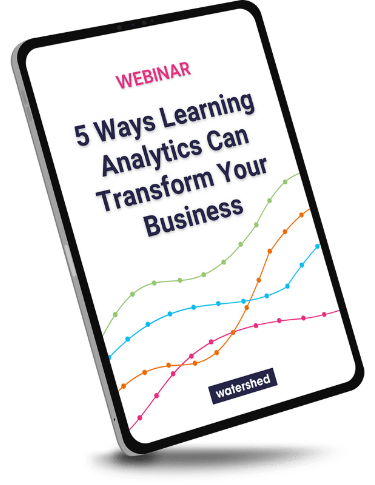We've introduced our Learning Analytics Research Study and explained how we've split learning categories into dimensions. And now, it's time to explore the results of our study, starting with an overview of these categories, including two new categories we discovered.
What are the categories of learning analytics?
As you may recall, our Learning Analytics Maturity Model is comprised of the following categories:
Recommended Resources
1) Learner Analytics
These seek to understand more about a specific person or group engaged in activities where learning is one of the outputs.
For example, it answers questions about usage patterns and performance for particular learners, such as who is training the most or if everyone in a group has completed compliance training.
2) Learning Experience Analytics
These seek to understand more about a specific learning activity.
For instance, this category often answers questions about usage patterns for a particular activity, such as the most-searched resources or topics or how learners navigate the experience.
3) Learning Program Analytics
These seek to understand how overall learning programs—typically encompassing many learners and many learning experiences—are performing and answer questions about learning’s strategic impact on the business.
But, after digging through our research, we realized that not all our uncovered data and reports fit perfectly into one of our original categories.
So, we created two new categories—or bonus categories, if you will. (NOTE: We’re unlikely to add these bonus categories to the Learning Analytics Triangle since they’re not strictly tied to learning analytics.)
4) Business Performance
As we conducted our research, we found a few reports that didn’t fit into any original learning analytics categories. That’s because these reports didn’t actually contain learning analytics. Instead, these were instances of non-learning analytics being mixed in with learning analytics.
For instance, several organizations tracking KPI data over time or by business division were bringing that same KPI data into Watershed so they could compare it with learning data—but they were also reporting on KPI data without the learning data.
As a result, we classified these reports under the dimension “KPI-Related Items” and placed them in a new category called “Business Performance” (see the following example).
5) Depends on the Data
We also found a few dimensions that didn’t neatly fit into one of our three main categories. So, we created another category called “Depends on the Data” that covers the following dimensions:
- None. Some reports didn't have any dimension at all, perhaps just displaying single numbers (e.g. total number of active learners for all time or average NPS score across all courses).
These single-number reports can relate to any category, and a dimension of "none" doesn't fit in a category. - Classification & Situation. “Classification” and “situation” dimensions can sit under any category since it’s possible to have classifications and/or situations of learners, learning experiences, etc.
What are dimensions?
We’ve split each category into several dimensions—which show how data is organized or what you’re comparing in a report. So for example, in a leaderboard showing top learners, the dimension would be people. In a line report showing completions by month, the dimension would be month.
So, How Popular Are These Categories in Practice?
We found that learning program reports had significantly higher average view counts per report—even though organizations created nearly double the amount of learning experience reports compared to learning program or learner reports.
And this is still true, but to a lesser extent, if we exclude the organization with the most report views, which also mainly uses learning program reports.
What does this mean?
This information provides some helpful insights:
- Reports within the Learning Program category, which look at a group of learners within the context of a particular learning program, tend to be used most frequently.
That doesn’t necessarily mean these reports are more valuable or impactful in terms of resulting actions, but it’s certainly a good indication that Learning Program reporting is worthwhile.
- Seasonal changes, such as business financial cycles, can affect Learner Program report usage because they are most relevant while the programs are running, especially around deadlines (e.g. completing program milestones).
In fact, if we look at data over time, Learning Experience reports have more views than Learning Program reports in the second half of the year, while Learning Program report views spike around the end of the financial year in April.
Actionable Insights
Here are three actions you can take away from this blog post:
- Learning Program reports tend to get the most attention, so make these reports available to your organization’s managers!
- Reports looking at the use and effectiveness of learning experiences are also popular. So, make these reports available to people responsible for sourcing content and providing experiences.
- Learner reports tend to be used less than the other categories, so they may not be the best place to start your learning analytics journey.
Recommended Reading
Up Next: Learner Categories
Next time, we’ll dive deeper into the dimensions within the learner categories and explore how organizations report on the data about their learners. Sign up for Watershed Insights so you don’t miss out!
About the author
As a co-author of xAPI, Andrew has been instrumental in revolutionizing the way we approach data-driven learning design. With his extensive background in instructional design and development, he’s an expert in crafting engaging learning experiences and a master at building robust learning platforms in both corporate and academic environments. Andrew’s journey began with a simple belief: learning should be meaningful, measurable, and, most importantly, enjoyable. This belief has led him to work with some of the industry’s most innovative organizations and thought leaders, helping them unlock the true potential of their learning strategies. Andrew has also shared his insights at conferences and workshops across the globe, empowering others to harness the power of data in their own learning initiatives.
Subscribe to our blog
